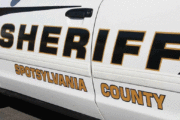Ari Ashe, wtop.com
WASHINGTON – Interstate 270 is considered one of the most choked roads in the Washington region, but solutions for the gridlock are few and far between.
Figures from the Maryland Department of Transportation show about 114,000 cars use I-270 daily, and that number is expected to jump to 200,000 in the next 10 to 15 years.
“Everyone who is familiar with 270 knows it is jammed up in the morning rush hour and evening rush hour,” says Gus Bauman, who studies transportation and funding and who chaired a Maryland Blue Ribbon Commission on Transportation Funding.
One proposal to ease congestion is the Corridor Cities Transitway, which would link Shady Grove, Gaithersburg and Clarskburg.
“It will not end congestion on 270. It will help by providing an alternative route, so that you don’t have to be on the road that is congested,” Bauman says.
The Corridor Cities Transitway project has been on the books since the 1970s, and would likely cost between $500 million to $875 million, depending on the calculation and whether it would be a light rail project or bus rapid transit.
With Gov. Martin O’Malley and lawmakers concentrating on how to replenish the Tran sportation Trust Fund so it can be help fund the Purple Line and Baltimore’s Red Line, the Corridor Cities Transitway seems years away. Maryland’s Transportation Trust Fun may run of money in 2018.
Montgomery County Executive Isiah “Ike” Leggett sees the I-270 and Corridor Cities Transitway project as equal on the priority list to the Purple Line.
“The county’s economic well being — and the state’s — depends on a plan to move forward with securing new transportation revenues for critically needed infrastructure,” says Leggett in a statement to WTOP.
Widening and expanding I-270 could present just as many challenges.
“The right of way on I-270 is 300 feet, but there are 12 lanes already. It’s unlike Northern Virginia where they had space in the middle to build the new Beltway Express Lanes, I-270 doesn’t have that space in the middle. It’s pretty much maxed out,” Bauman says.
While there is some talk about potential options closer to Frederick County, it appears in the heart of Montgomery County, particularly south of Gaithersburg, there may not be room to create brand new lanes.
Instead, the talk between Montgomery County and the Maryland State Highway Administration revolves around expanding High Occupancy Vehicle lanes.
In a statement to WTOP, the SHA points out one suggestion from the Montgomery County Council to remove the shoulder along I-270 and convert it to a HOV lane would pose some challenges.
SHA spokesman Dave Buck says it would severely impact emergency vehicle response times and force broken down cars or accident victims into travel lanes, posing a safety risk.
“While there are challenges to overcome and investments to be made, the Maryland Department of Transportation is committed to a partnership with Montgomery County and VDOT. Maryland is completing an analysis on the west side of I-495 and the southern end of I-270 (West Side Mobility Study), reviewing real-time traffic data to assist in identifying short, medium and long-term options along these corridors,” says Buck.
As for express toll lanes, similar to those on the Capital Beltway in Virginia, the Maryland Transportation Authority, the agency that that operates the state’s toll roads, tells WTOP there have been no conversations with anyone in Montgomery County nor with the transportation department about any projects for I-270 or the Beltway.
Follow @ariasheWTOP and @WTOP on Twitter.
(Copyright 2013 by WTOP. All Rights Reserved.)







